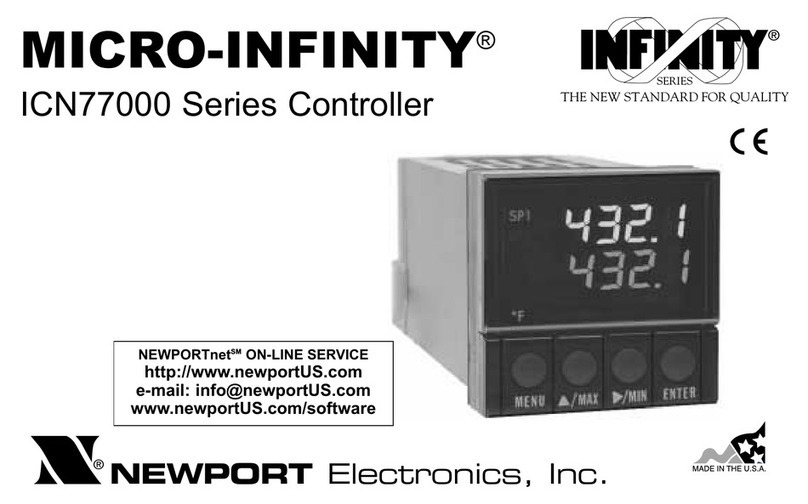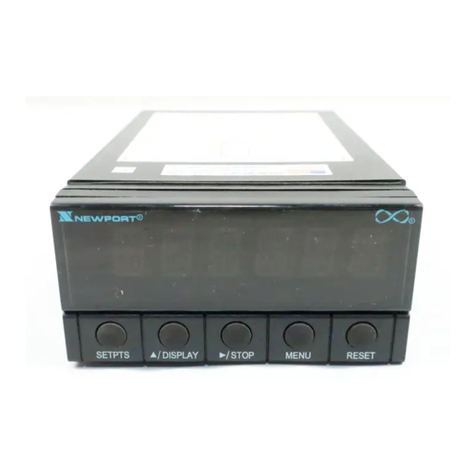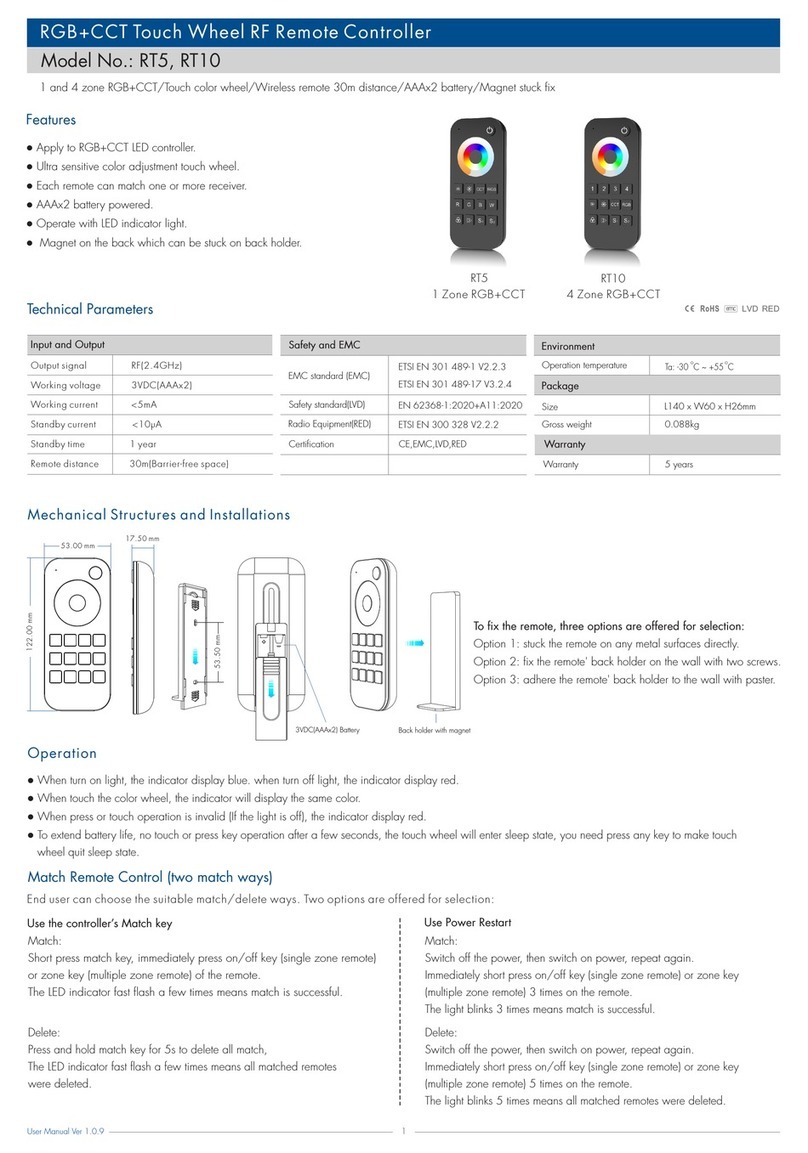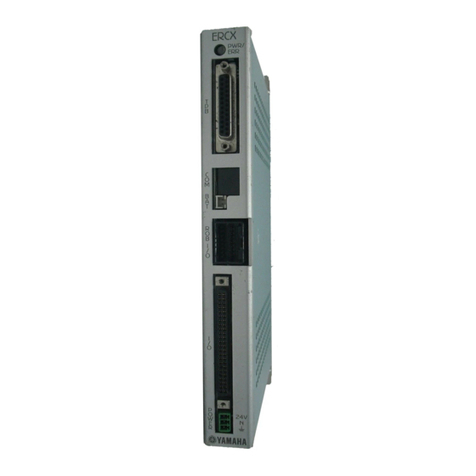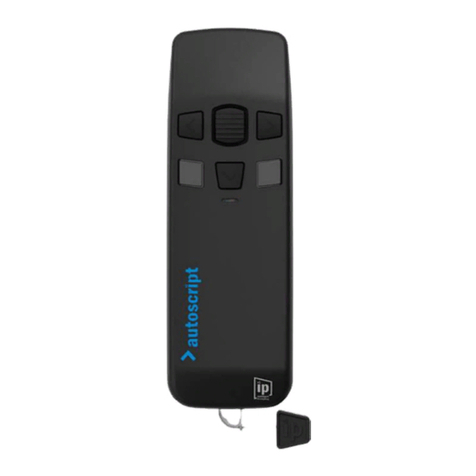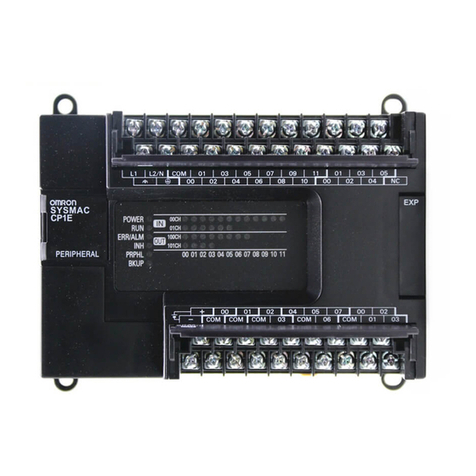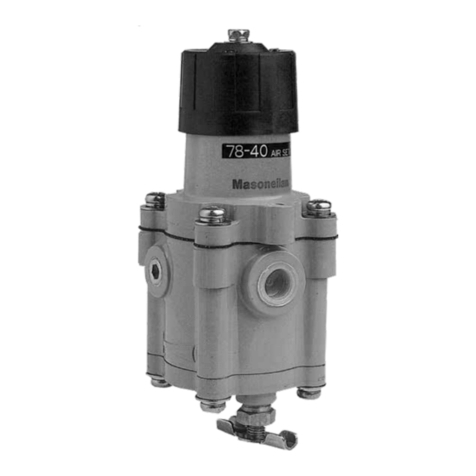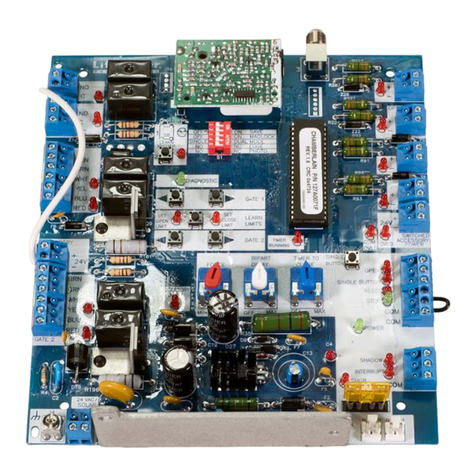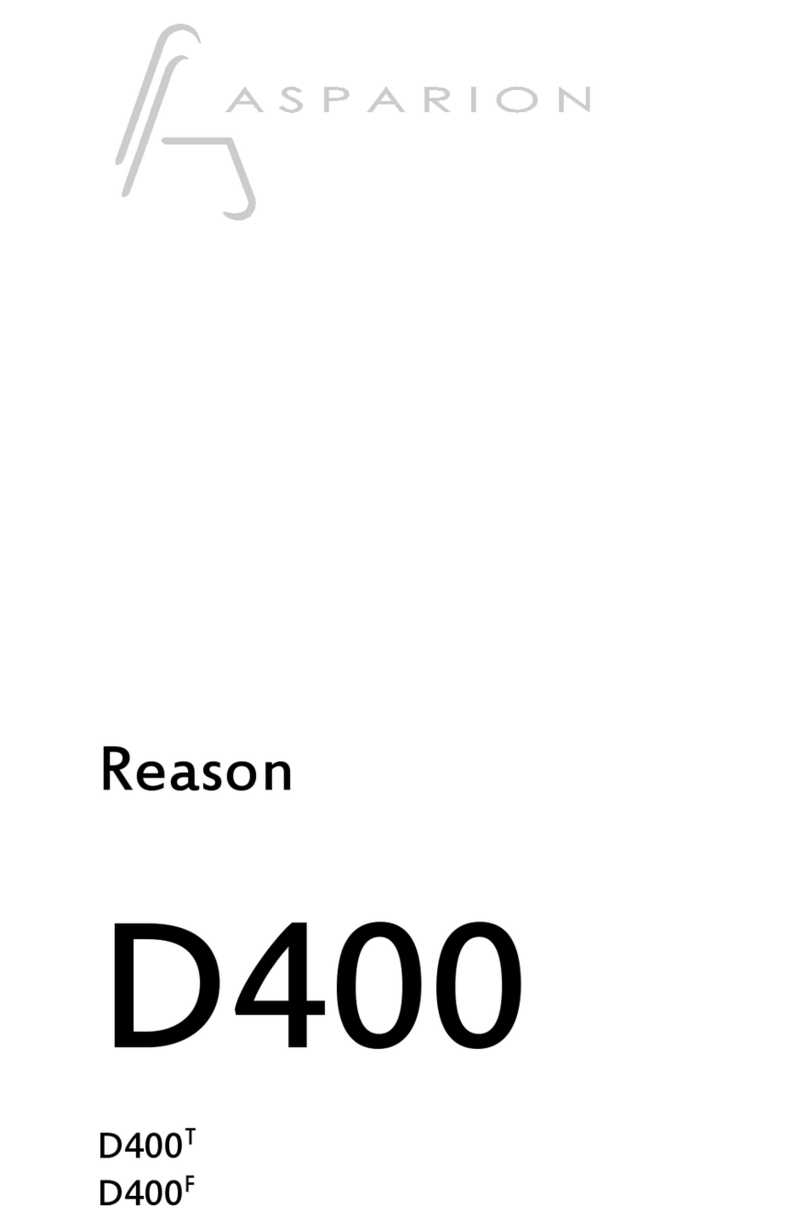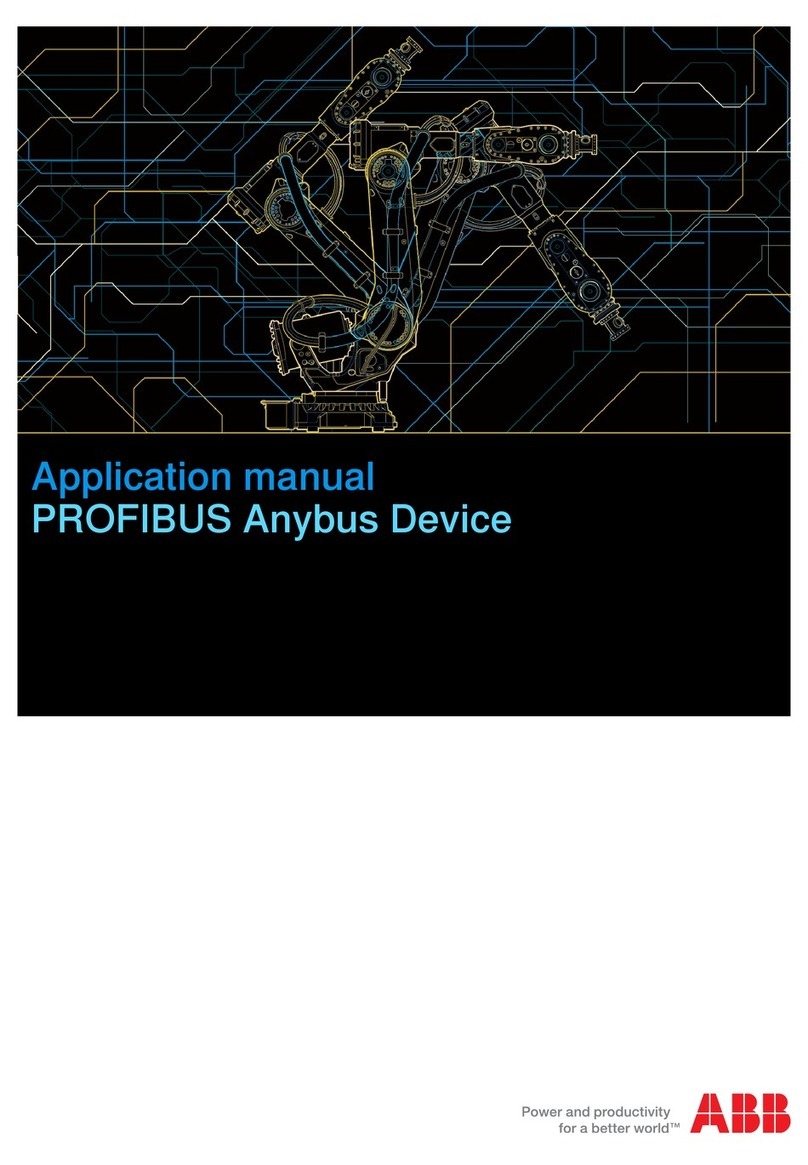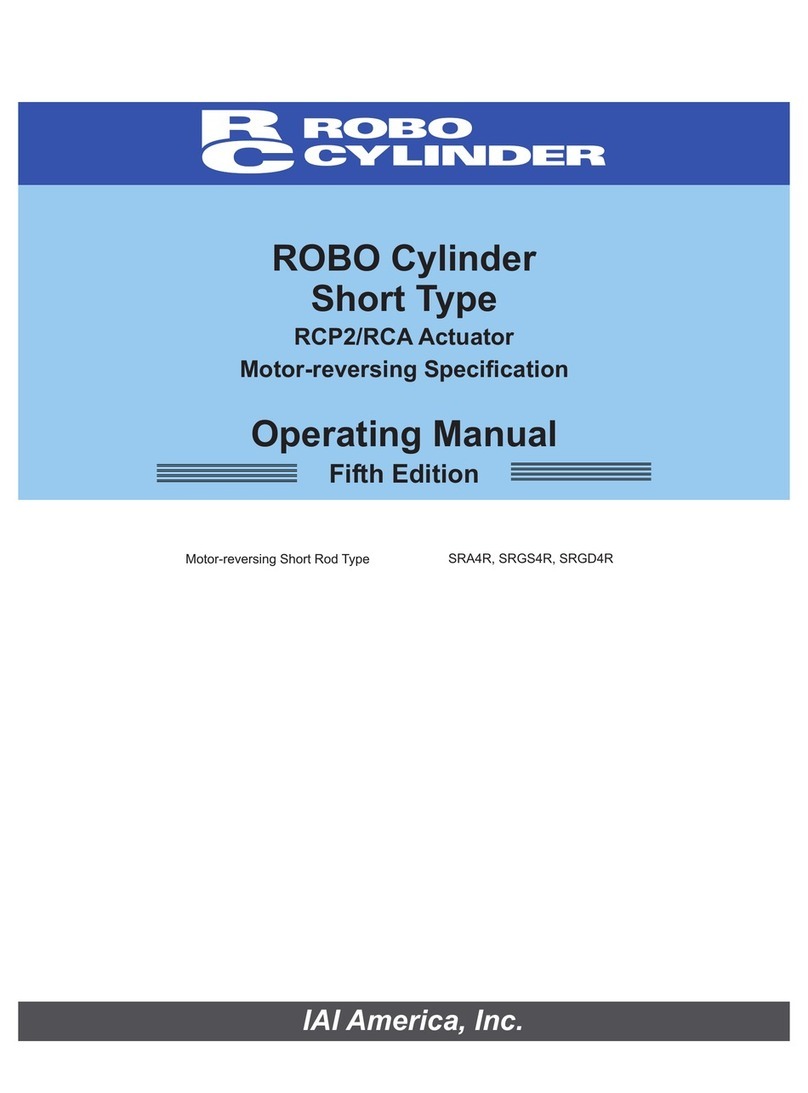Newport Electronics i Series User manual

http://www.newportUS.com/i
®
NEWPORT
Electronics,Inc.
iDRA Controller
DIN Rail Temperature/Process
with Isolated Analog utput
perator’s Manual
All manuals and user guides at all-guides.com
all-guides.com

Counters
Frequency Meters
PID Controllers
Clock/Timers
Printers
Process Meters
On/Off
Controllers
Recorders
Relative
Humidity
Transmitters
Thermocou les
Thermistors
Wire
Rate Meters
Timers
Totalizers
Strain Gauge
Meters
Voltmeters
Multimeters
Soldering Iron
Testers
H ens
H Controllers
H Electrodes
RTDs
Thermowells
Flow Sensors
For Immediate Assistance
In the U.S.A. and Canada: 1-800-NEWPORT
®
In Mexico: (95) 800-NEWPORT
SM
Or call your local NEWPORT Office.
Internet e-mail
info@new ortUS.com
Additional roducts from
NEWP RTnetSM n-Line Service
www.new ortUS.com
®
NEWPORT
Electronics,Inc.
It is the olicy of NEWPORT to com ly with all worldwide safety and EMC/EMI regulations that a ly. NEWPORT is constantly
ursuing certification of its roducts to the Euro ean New A roach Directives. NEWPORT will add the CE mark to every
a ro riate device u on certification.
The information contained in this document is believed to be correct but NEWPORT Electronics, Inc. acce ts no liability for any
errors it contains, and reserves the right to alter s ecifications without notice.
WARNING: These roducts are not designed for use in, and should not be used for, atient connected a lications.
TRADEMARK NOTICE:
, NEWPORT, NEWPORT
®
,newportUS.com,and the “Meter Bezel Design” are
trademarks of NEWPORT Electronics, Inc.
PATENT NOTICE: This roduct is covered by one or more of the following atents: U.S. Pat. No. Des. 336,895; 5,274,577;
6,243,021 / CANADA 2052599; 2052600/ ITALY 1249456; 1250938 / FRANCE BREVET No. 91 12756 / SPAIN 2039150;
2048066 / UK PATENT No. GB2 249 837; GB2 248 954 / GERMANY DE 41 34398 C2. The
®
is a Trademark of OMEGA
Engineering, Inc. Used Under License. Other US and International Patents ending or a lied for.
This device is marked with the international caution symbol. It is im ortant to read the Setu Guide before installing or
commissioning this device as it contains im ortant information relating to safety and EMC.
All manuals and user guides at all-guides.com

TABLE OF CONTENTS
Part 1: Introduction............................................................................................2
1.1 Description .................................................................................2
1.2 Safety Considerations ...............................................................3
1.3 Before You Begin .......................................................................4
Part 2: Setup.......................................................................................................5
2.1 ptional Remote Programmer Front Panel ............................5
2.2 Front Panel Connections...........................................................6
2.3 Electrical Installation .................................................................7
2.3.1 Power Connections........................................................7
2.3.2 Thermocouple - Input Connection................................8
2.3.3 Two / Three / Four Wire RTD-Hookup...........................9
2.3.4 Process Current - Wiring Hookup...............................10
2.3.5 Process Voltage - Wiring Hookup...............................10
2.3.6 Wiring utputs - Wiring Hookup.................................11
Part 3: peration: Configuration Mode .........................................................14
3.1 Introduction ..............................................................................14
Turning your Instrument n for the First Time
Buttons Functions in Configuration Mode
3.2 Menu Configuration ................................................................15
3.2.1 ID Number .....................................................................16
3.2.2 Set Points......................................................................17
3.2.3 Configuration Menu ....................................................18
3.2.4 Input Type Menu ...........................................................18
Input Type (Thermocouple) ........................................19
Input Type (RTD)...........................................................20
Input Type (Process) ...................................................21
3.2.5 Reading Configuration Menu .....................................21
3.2.6 Alarm 1 Menu ...............................................................25
3.2.7 Alarm 2 Menu................................................................29
3.2.8 Loop Break Time Menu/Field Calibration...................30
3.2.9 utput 1 Menu ..............................................................32
3.2.10 Analog utput (Retransmission) ................................39
3.2.11 Ramp and Soak Menu ..................................................41
3.2.12 ID Code Menu ...............................................................43
3.2.13 Communication ptions Menu ...................................45
3.2.14 Display Color Selection Menu.....................................51
Part 4: Specifications ......................................................................................54
Part 5: Factory Preset Values .........................................................................59
CE Approval Information ................................................................................61
i
All manuals and user guides at all-guides.com

LIST OF FIGURES:
Figure 2.1 ptional Remote Programmer Front Panel ............................ 5
Figure 2.2 Input and utput Connections .................................................6
Figure 2.3 Main Power Connections ..........................................................7
Figure 2.4 Thermocouple Wiring Hookup..................................................8
Figure 2.5 Two/Three/Four-wire RTD
a) RTD-1000 ohm and 500 ohm Wiring Hookup.....................9
b) RTD-100 ohm Wiring Hookup..............................................9
Figure 2.6 Process Current Wiring Hookup
(Internal and External Excitation) ...........................................10
Figure 2.7 Process Voltage Wiring Hookup
a) With Sensor Excitation ......................................................10
b) Without Sensor Excitation.................................................10
Figure 2.8 utput Connections:
a) Mechanical Relay and SSR utputs – Wiring Hookup ...11
b) Pulse utputs – Wiring Hookup........................................11
Figure 2.9 Isolated Analog utput Wiring Hookup .................................11
Figure 2.10 Snubber Circuits Wiring Hookup............................................12
Figure 2.11 Typical Application...................................................................12
Figure 2.12 Communication utputs:
a) RS-232 utput – Wiring Hookup.......................................13
b) RS-485 utput – Wiring Hookup.......................................13
Figure 2.13 Excitation utput .....................................................................13
Figure 3.1 Flow Chart for ID and Set Points Menu..................................15
Figure 3.2 Flow Chart for Configuration Menu........................................18
Figure 3.3 Flow Chart for Input Type Menu .............................................18
Figure 3.4 Flow Chart for Reading Configuration Menu.........................21
Figure 3.5 Flow Chart for Alarm 1 Menu ..................................................25
Figure 3.6 Flow Chart for Alarm 2 Menu ..................................................29
Figure 3.7 Flow Chart for Loop Break Time/Field Calibration ...............30
Figure 3.8 Flow Chart for utput 1 Menu.................................................32
Figure 3.9 Flow Chart for Analog utput Menu.......................................39
Figure 3.10 Flow Chart for Ramp and Soak Menu ....................................41
Figure 3.11 Flow Chart for ID Code Menu..................................................43
Figure 3.12 Flow Chart for Communication ption Menu........................45
Figure 3.13 Flow Chart for Display Color Selection Menu .......................51
LIST OF TABLES:
Table 2.1 ptional Remote Programmer Front Panel Annunciators .....5
Table 2.2 Connectors .................................................................................6
Table 2.3 Fuse Requirement......................................................................7
Table 2.4 TC Wire Color Chart...................................................................8
Table 3.1 Button Function in Configuration Mode ................................14
Table 3.2 Conversion Table .....................................................................24
Table 4.1 Input Properties........................................................................58
Table 5.1 Factory Preset Values..............................................................59
ii
All manuals and user guides at all-guides.com

NOTES, WARNINGS and CAUTIONS
Information that is es ecially im ortant to note is identified by following labels:
• N TE
• WARNING or CAUTI N
• IMP RTANT
• TIP
N TE: Provides you with information that is im ortant to successfully
setu and use the Programmable Digital Meter.
CAUTI N or WARNING: Tells you about the risk of electrical shock.
CAUTI N, WARNING or IMP RTANT: Tells you of circumstances or
ractices that can effect the instrument’s functionality and must refer
to accom anying documents.
TIP: Provides you hel ful hints.
1
All manuals and user guides at all-guides.com

PART 1
INTRODUCTION
1.1 Description
This device can be urchased as a controller, with out uts or as a signal
conditioner.
• The iSeries offers un aralleled flexibility in rocess measurement. Each unit
allows the user to select the in ut ty e, from 10 thermocou le ty es (J, K, T,
E, R, S, B, C, N and J DIN), Pt RTDs (100, 500 or 1000 Ω, with either 385 or
392 curve), DC voltage, or DC current. The voltage/current in uts are fully
scalable to virtually all engineering units, with selectable decimal oint,
erfect for use with ressure, flow or other rocess in ut.
• The tem erature control can be achieved by using on/off or PID heat/cool
control strategy. Control can be o timized with an auto tune feature. The
instrument offers a ram to set oint with timed soak eriod before switching
off the out ut.
• The standard features include three out uts with a choice of relay, SSR, or
dc ulse out uts and isolated analog voltage or current out ut. O tions
include rogrammable RS-232 or RS-485 serial communication or excitation.
Analog Out ut is fully scalable and may be configured as retransmission to
follow your dis lay. Universal ower su ly acce ts 90 to 240 Vac. Low voltage
ower o tion acce ts 24 Vac or 20 to 36 Vdc.
• The o tional Remote Programmer features a large, three color
rogrammable dis lay with ca ability to change a color every time the Alarm
is triggered.
2
All manuals and user guides at all-guides.com
all-guides.com

1.2 Safety Considerations
This device is marked with the International Caution Symbol. It is
important to read this manual before installing or commissioning this
device as it contains im ortant information relating to Safety and EMC
(Electromagnetic Com atibility).
This instrument is a anel mount device rotected in accordance with
EN 61010-1:2001, electrical safety requirements for electrical equi ment
for measurement, control and laboratory. Installation of this instrument
should be done by qualified ersonnel. In order to ensure safe o eration,
the following instructions should be followed.
This instrument has no power-on switch. An external switch or circuit-
breaker shall be included in the building installation as a disconnecting
device. It shall be marked to indicate this function, and it shall be in close
roximity to the equi ment within easy reach of the o erator. The switch or
circuit-breaker shall meet the relevant requirements of IEC 947–1 and
IEC 947-3 (International Electrotechnical Commission). The switch shall
not be incor orated in the main su ly cord.
Furthermore, to rovide rotection against excessive energy being drawn
from the main su ly in case of a fault in the equi ment, an overcurrent
rotection device shall be installed.
• Do not exceed voltage rating on the label located on the to of the
instrument housing.
• Always disconnect ower before changing signal and ower
connections.
• Do not use this instrument on a work bench without its case for safety
reasons.
• Do not o erate this instrument in flammable or ex losive atmos heres.
• Do not ex ose this instrument to rain or moisture.
• Unit mounting should allow for adequate ventilation to ensure
instrument does not exceed o erating tem erature rating.
• Use electrical wires with adequate size to handle mechanical strain
and ower requirements. Install without ex osing bare wire outside the
connector to minimize electrical shock hazards.
EMC Considerations
• Whenever EMC is an issue, always use shielded cables.
• Never run signal and ower wires in the same conduit.
• Use signal wire connections with twisted- air cables.
• Install Ferrite Bead(s) on signal wires close to the instrument if EMC
roblems ersist.
Failure to follow all instructions and warnings may result in injury!
3
All manuals and user guides at all-guides.com

1.3 Before You Begin
Inspecting Your Shipment:
Remove the acking sli and verify that you have received everything
listed. Ins ect the container and equi ment for signs of damage as soon
as you receive the shi ment. Note any evidence of rough handling in
transit. Immediately re ort any damage to the shi ing agent. The carrier
will not honor damage claims unless all shi ing material is saved for
ins ection. After examining and removing the contents, save the acking
material and carton in the event reshi ment is necessary.
Customer Service:
If you need assistance, lease call the nearest Customer Service
De artment, listed in this manual.
Manuals, Software:
The latest O eration and Communication Manual as well as free software
are available from the website listed in this manual or on the CD-R M
enclosed with your shipment.
For first-time users: Refer to the QuickStart Manual for basic o eration
and set-u instructions.
The following ste s in this manual for configuring your device are
ex lained by using the o tional Remote Programmer Display (iDRP).
If you have the Serial Communications ption (-C24) you can easily
configure the controller on your com uter or on-line.
To Disable utputs:
To ensure that menu changes are ro erly stored, Standby Mode should
be used during setu of the instrument. During Standby Mode, the
instrument remains in a ready condition, but all out uts are disabled.
Standby Mode is useful when maintenence of the system is necessary.
When the instrument is in "RUN" Mode, push dtwice to disable all
out uts and alarms. It is now in "STANDBY" Mode. Push donce more
to resume "RUN" Mode.
PUSH dTWICE to disable the system during an EMERGENCY.
To Reset the Meter:
When the controller is in the "MENU" Mode, push conce to direct
controller one ste backward of the to menu item.
Push ctwice to reset controller, rior to resuming "Run" Mode exce t
after "Alarms", that will go to the "Run" Mode without resetting the
controller.
4
All manuals and user guides at all-guides.com

PART 2
SETUP
Refer to the Quick Start Guide for assembly and disassembly
instructions.
2.1 ptional Remote Programmer Front Panel
Figure 2.1 ptional Remote Programmer Front Panel
Table 2.1
ptional Remote Programmer Front Panel Annunciators
1Out ut 1/Set oint 1/ Alarm 1 indicator
2Out ut 2/Set oint 2/ Alarm 2 indicator
°C °C unit indicator
°F °F unit indicator
aChanges dis lay to Configuration Mode and
advances through menu items*
bUsed in Program Mode and Peak Recall*
cUsed in Program Mode and Valley Recall*
d
Accesses submenus in Configuration Mode
and stores selected values*
* See Part 3 O eration: Configuration Mode
5
All manuals and user guides at all-guides.com

2.2 Front Panel Connections
The front anel connections are shown in Figures 2.2 and 2.3.
Figure 2.2 Input and utput Connections
Table 2.2 Connectors
P WER AC/DC Power Connector: All models
INPUT In ut Connector:
All models TC, PR (Process), RTD
UTPUT 1 Based on one of the following models:
Relay SPDT
Solid State Relay
Pulse
UTPUT 2 Based on one of the following models:
Relay SPDT
Solid State Relay
Pulse
UTPUT 3 Isolated Analog Out ut (Voltage and Current)
PTI N Based on one of the following models:
RS-232C and RS-485
Excitation
123456789
10
6
All manuals and user guides at all-guides.com

2.3 Electrical Installation
2.3.1 Power Connections
Caution: Do not connect ower to your device until you have com leted all
in ut and out ut connections. Failure to do so may result in injury!
Connect the main ower connections as shown in the figure below.
Figure 2.3 Main Power Connections
Table 2.3 Fuse Requirement (see specifications)
FUSE Connector utput Type For 115Vac For 230Vac DC
FUSE 1 Power N/A 100 mA(T) 63 mA(T) 63 mA(T)
FUSE 2 Power N/A N/A N/A 400 mA(T)
For the low voltage ower o tion, in order to maintain the same degree of
rotection as the standard high voltage in ut ower units (90 - 240 Vac),
always use a Safety Agency A roved DC or AC source with the same
Overvoltage Category and ollution degree as the standard AC unit
(90 - 240 Vac).
The Safety Euro ean Standard EN61010-1 for measurement, control,and
laboratory equi ment requires that fuses must be s ecified based on
IEC127. This standard s ecifies for a Time-lag fuse, the letter code “T”.
The above recommended fuses are of the ty e IEC127-2-sheet III. Be
aware that there are significant differences between the requirements
listed in the UL 248-14/CSA 248.14 and the IEC 127 fuse standards. As a
result, no single fuse can carry all a roval listings. A 1.0 Am IEC fuse is
a roximately equivalent to a 1.4 Am UL/CSA fuse. It is advised to
consult the manufacturer’s data sheets for a cross-reference.
* See S ecification Section
7
All manuals and user guides at all-guides.com
all-guides.com

2.3.2 Thermocouple Input
The figure below shows the wiring hooku for any thermocou le ty e.
For example, for Ty e K hooku , connect the yellow wire to the "2" terminal and
the red wire to the "1(-)" terminal.
When configuring your controller, select Thermocouple and Thermocouple Type
in the In ut Ty e menu (see Part 3).
Figure 2.4 Thermocouple Wiring Hookup
If the in ut wires of the meter get disconnected or broken, it will dis lay
+OPN “In ut (+) O en” message. For safety ur ose you may want to
set u your alarm to be triggered when in ut is o en. See Alarm 1 and 2
cha ters for details.
8
TYPE Input Connector Jacket (external insulation)
Terminal 1 (-) Terminal 2 (+) Extension Grade
JRed White dark-Brown Black
KRed Yellow dark-Brown Yellow
TRed Blue dark-Brown Blue
ERed Pur le dark-Brown Pur le
NRed Orange dark-Brown Brown
RRed Black - Green
SRed Black - Green
BRed Gray - Black
Table 2.4 TC Wire Color Chart
All manuals and user guides at all-guides.com

9
2.3.3 Two/Three/Four-Wire RTD
The figures below show the in ut connections and in ut connector jum ers
(shown in bold lines) required to hooku a 2-, 3- or 4-wire RTD.
Figure 2.5 a) RTD-1000 ohm and b) RTD-100 ohm Wiring Hookup
500 ohm Wiring Hookup
The two-wire connection is sim lest method, but does not com ensate for
lead-wire tem erature change and often requires calibration to cancel lead-wire
resistance offset.
The three-wire connection works best with RTD leads closely equal in
resistance. The device measures the RTD, lus u er and lower lead dro
voltage and the subtracts twice the measured dro in the lower su ly current
lead roducing excellent lead-resistance cancellation for balanced
measurements.
The four-wire RTD hooku is a licable to unbalanced lead resistance and
enables the device to measure and subtract the lead voltage, which roduces
the best lead-resistance cancellation.
When configuring your controller, select RTD Type and RTD value in the In ut
Ty e menu (see Part 3).
If the in ut wires of the meter get disconnected or broken, it will dis lay
+OPN “In ut (+) O en” message exce t in case of 500/1000 Ω 2-wire
RTD. In this case the dis lay shows -OPN “In ut (-) O en” message.
For safety ur ose you may want to set u your alarm to be triggered
when in ut is o en. See Alarm 1 and 2 cha ters for details.
2-WIRE
4-WIRE
3-WIRE
2-WIRE
4-WIRE
3-WIRE
All manuals and user guides at all-guides.com

10
2.3.4 Process Current
The figure below shows the wiring hooku for Process Current 0 – 20 mA.
Figure 2.6 Process Current Wiring Hookup
(Internal and External Excitation)
When configuring your instrument, select Process Type in the In ut Ty e Menu
(see Part 3).
2.3.5 Process Voltage
The figure below shows the wiring hooku for Process Voltage 0 – 100 mV,
0 – 1 V, 0 – 10 V.
Figure 2.7 Process Voltage Wiring Hookup
(with Sensor Excitation and without Sensor Excitation)
RL- Voltage limited resistor, which allows to convert 24 Vdc internal excitation
voltage to the a ro riate rocess in ut value. For instance: if the otentiometer
value is equal to 10 kΩ, the minimum RLis 14 kΩ for 10 V rocess in ut.
When configuring your instrument, select Process Type in the In ut Ty e Menu
(see Part 3).
100 mV
Return
1 V or 10 V
RL
100 mV
1 V or 10 V
Return
0-20 mA
Internal
Excitation 0-20 mA
External
Excitation
All manuals and user guides at all-guides.com

11
2.3.6 Wiring utputs
This meter has three factory installed out uts.
Out ut 1 can be configured as Control Out ut or Alarm Out ut with SPDT
Mechanical Relay, SPST Solid State Relay, or Pulse.
Out ut 2 is an Alarm Out ut with SPDT Mechanical Relay, SPST Solid State
Relay, or Pulse.
Out ut 3 is Isolated Analog (retransmission) Voltage and Current Out ut.
Connections are shown below.
Figure 2.8
a) Mechanical Relay and SSR b) Pulse utput
utputs Wiring Hookup Wiring Hookup
Figure 2.9 Isolated Analog utput Wiring Hookup.
123456789
10
RETURN
CURRENT
VOLTAGE
SSR
RELAY External
Load
External
Load
0.5 A (T)
3 A (T)
C
NO
C
NC
NO
UTPUT 1 UTPUT 2
UTPUT 1 UTPUT 2
RETURN
PULSE
RETURN
PULSE
PULSE
PULSE
All manuals and user guides at all-guides.com

This device has snubber circuits designed to rotect the contacts of the
mechanical relays when it switches to inductive loads (i.e. solenoids, relays).
These snubbers are internally connected between the Common (C) and
Normally O en (NO) relay contacts of Out ut 1 and Out ut 2.
If you have an inductive load connected between Common (C) and
Normally Closed (NC) contacts of the mechanical relays and you want to
rotect them from the rush current during the switching eriod, you have
to connect an external snubber circuit between Common (C) and
Normally Closed (NC) contacts as indicated in the figure below.
Figure 2.10 Snubber Circuits Wiring Hookup
Figure 2.11 Typical Applications
TEMPERATURE
CONTROLLER CONTROL
SIDE
dc INPUT
SSR
ac INPUT
SSR
ac INPUT
SSR
LOAD
SIDE HEATER
Vac
Vac
dc CONTROLLED SSR USED WITH TEMPERATURE CONTROLLER WITH dc VOLTAGE SSR DRIVER OUTPUT
FAST BLOW
FUSE
0 or 5 Vdc,
TYPICALLY
4
3
1
2
TEMPERATURE
CONTROLLER CONTROL
SIDE
LOAD
SIDE HEATER
Vac
Vac
ac CONTROLLED SSR USED WITH TEMPERATURE CONTROLLER WITH MECHANICAL RELAY OUTPUT
FAST BLOW
FUSE
Vac
DRIVING
SSR
4
3
1
2
TEMPERATURE
CONTROLLER
CONTROL SIDE
LOAD
RESISTOR LOAD
SIDE HEATER
Vac
Vac
ac CONTROLLED SSR USED WITH TEMPERATURE CONTROLLER WITH TRIAC OUTPUT
FAST BLOW
FUSE
Vac
DRIVING
SSR
4
3
1
2
RC CIRCUIT
R
VARIST R
275 V
C
NC
NO
C
NC
NO
UTPUT 1 UTPUT 2
100
1/4 W 0.033
12
All manuals and user guides at all-guides.com
all-guides.com

This device may have a rogrammable serial communication out ut.
The RS-232 and RS-485 Out ut Connections are shown below.
Figure 2.12 Serial Communication
a) RS-232 utput Wiring Hookup b) RS-485 utput Wiring Hookup
This device has built-in excitation. The connections are shown below.
Figure 2.13 Excitation utput
-
+
24 Vdc
Tx
Rx
RTN
-Tx / Rx
+Tx / Rx
13
Excitation is not available
if communication (-C24)
or low ower (-DC) o tion
is installed.
All manuals and user guides at all-guides.com

14
PART 3
OPERATION: Configu ation Mode
3.1 Introduction
The following configuration section is ex lained by using the O tional
Remote Programmer Dis lay, you may also configure your device on your
com uter using the Serial Communications O tion.
The instrument has two different modes of o eration. The first, Run Mode, is
used to dis lay values for the Process Variable, and to dis lay or clear Peak and
Valley values. The other mode, Menu Configuration Mode, is used to navigate
through the menu o tions and configure the controller. Part 3 of this manual will
ex lain the Menu Configuration Mode. For your instrument to o erate ro erly,
the user must first " rogram" or configure the menu o tions.
Turning your Controller n for the First Time
The device becomes active as soon as it is connected to a ower source. It has
no On or Off switch. The device at first momentarily shows the software version
number, followed by reset RST, and then roceeds to the Run Mode
For first-time users: Refer to the QuickStart Manual for basic o eration and
set-u instructions.
Table 3.1 Button Function in Configuration Mode
• To enter the Menu, the user must first ress abutton.
• Use this button to advance/navigate to the next menu item. The user can
navigate through all the to level menus by ressing a.
• While a arameter is being modified, ress ato esca e without saving the arameter.
• Press the u bbutton to scroll through “flashing” selections. When a numerical
value is dis layed ress this key to increase value of a arameter that is
currently being modified.
• Holding the bbutton down for a roximately 3 seconds will s eed u the rate at
which the set oint value increments.
• In the Run Mode ress bcauses the dis lay to flash the PEAK value – ress
again to return to the Run Mode.
• Press the down cbutton to go back to a revious To Level Menu item.
• Press this button twice to reset the controller to the Run Mode.
• When a numerical value is flashing (exce t set oint value) ress cto scroll
digits from left to right allowing the user to select the desired digit to modify.
• When a set oint value is dis layed ress cto decrease value of a set oint that
is currently being modified. Holding the cbutton down for a roximately 3
seconds will s eed u the rate at which the set oint value is decremented.
• In the Run Mode ress ccauses the dis lay to flash the VALLEY value – ress
again to return to the Run Mode.
• Press the enter dbutton to access the submenus from a To Level Menu item.
• Press dto store a submenu selection or after entering a value — the dis lay will
flash a STRD message to confirm your selection.
• To reset flashing Peak or Valley ress d.
• In the Run Mode, ress dtwice to enable Standby Mode with flashing STBY.
Reset: Exce t for Alarms, modifying any settings of the menu configuration
will reset the instrument rior to resuming Run Mode.
a
MENU
b
(UP)
c
(D WN)
d
ENTER
All manuals and user guides at all-guides.com

15
3.2 Menu Configuration
It is required that you ut the controller in the Standby Mode for any
configuration change other than Set oints & Alarms.
Figure 3.1 Flow Chart for ID and Set Points
All manuals and user guides at all-guides.com

16
3.2.1 ID Number
SEE ID MENU SELECTI N IN C NFIGURATI N SECTI N F R
ENABLE/DISABLE R CHANGE ID C DE.
If ID Code is Disabled or set as Default (0000) the menu will ski ID ste
to Set Point Menu.
If ID Code is set to Full Security Level and user attem ts to enter the
Main Menu, they will be rom ted for an ID Code.
If ID Code is set to Setpoint/ID Security Level and user attem ts to enter
the Configuration Menu, they will be rom ted for an ID Code.
ENTERING Y UR N N-DEFAULT FULL SECURITY ID NUMBER.
Press a1) Dis lay shows ID.
Press d2) Dis lay advances to ____.
Press b& c3) Press bto increase digit 0-9. Press cto activate next digit
(flashing).
Continue to use band cto enter your 4-digit ID code.
Press d4) If the correct ID code is entered, the menu will advance to the
Set oint 1 Menu, otherwise an error message ERRo will be
dis layed and the instrument will return to the Run Mode.
To change ID Code, see ID Menu in the Configuration section.
ENTERING Y UR N N-DEFAULT SETP INT/ID SECURITY ID NUMBER.
Press a5) Dis lay shows SP1 Set oint 1 Menu.
Press a6) Dis lay shows SP2 Set oint 2 Menu.
Press a7) Dis lay shows ID ID Code Menu.
Press d8) Dis lay advances to ____.
Press b& c9) Use band cto change your ID Code.
Press d10) If correct ID Code is entered, the dis lay will advance to the
INPT In ut Menu, otherwise the error message ERRo will be
dis layed and the controller will return to the Run Mode.
To revent unauthorized tam ering with the setu arameters, the
controller rovides rotection by requiring the user to enter the ID Code
before allowing access to subsequent menus. If the ID Code entered
does not match the ID Code stored, the controller res onds with an error
message and access to subsequent menus will be denied.
Use numbers that are easy for you to remember. If the ID Code is
forgotten or lost, call customer service with your serial number to access
and reset the default to 0000.
All manuals and user guides at all-guides.com
Other manuals for i Series
3
Table of contents
Other Newport Electronics Controllers manuals
Popular Controllers manuals by other brands
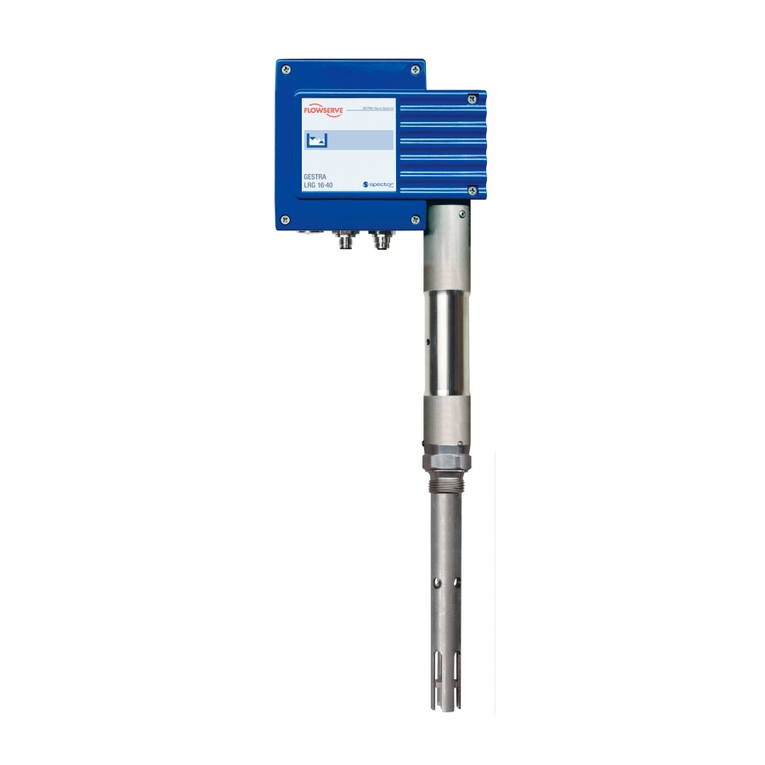
GESTRA
GESTRA LRR 1-52 Installation & operating manual
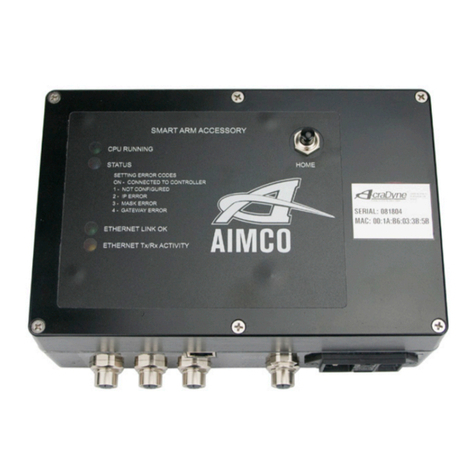
Aimco
Aimco AcraDyne Setup Instruction
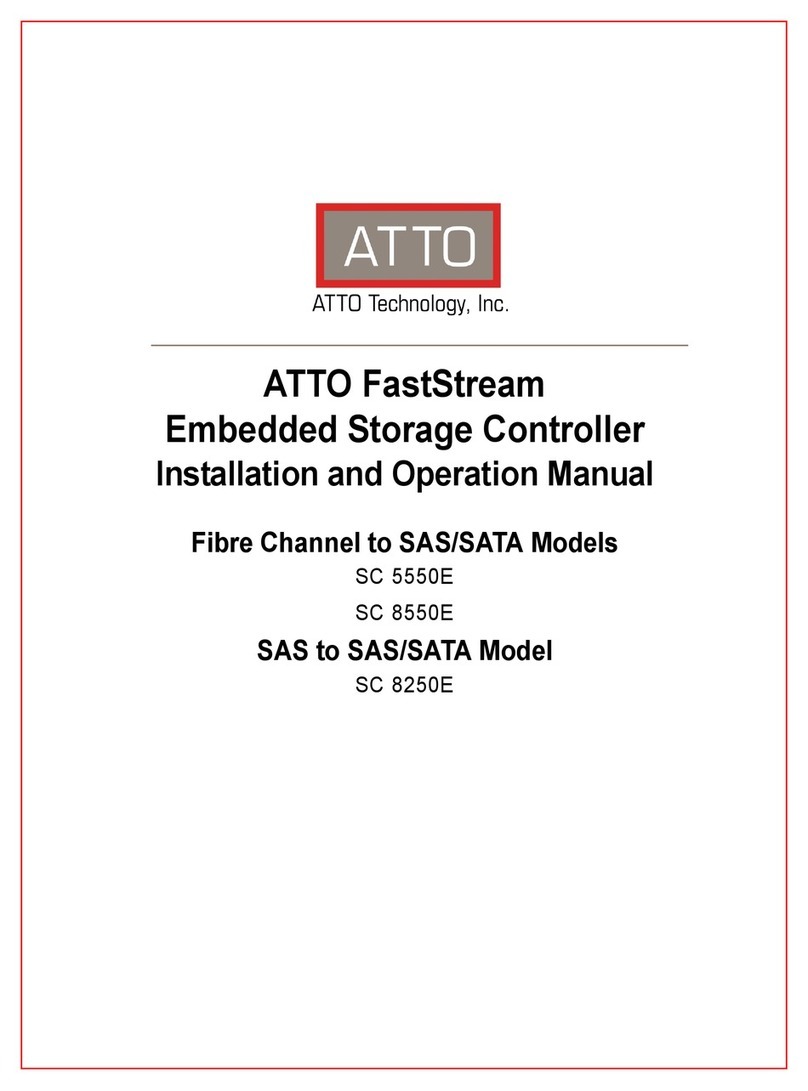
ATTO Technology
ATTO Technology SC 5550E Installation and operation manual
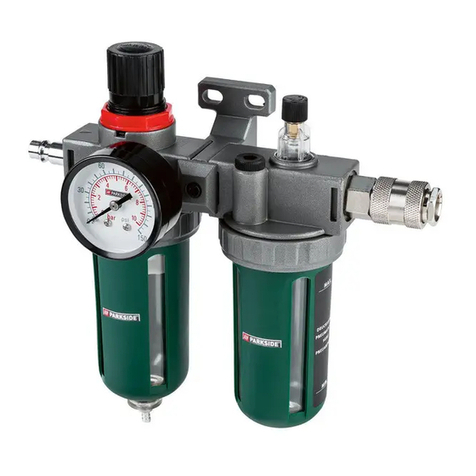
Parkside
Parkside PDWE 8 B2 Translation of the original instructions
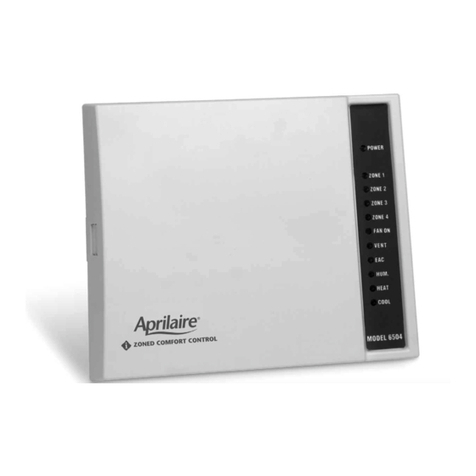
Aprilaire
Aprilaire 6504 owner's manual
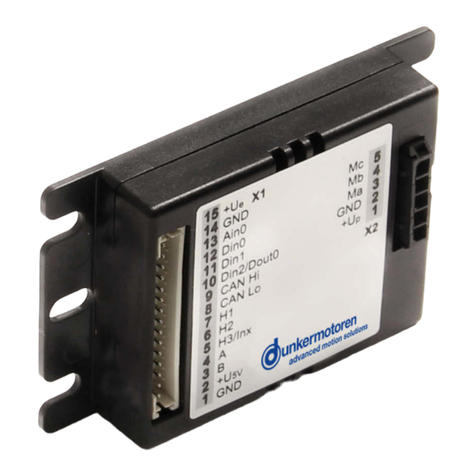
Ametek
Ametek Dunkermotoren BGE 6005 A Operation manual
